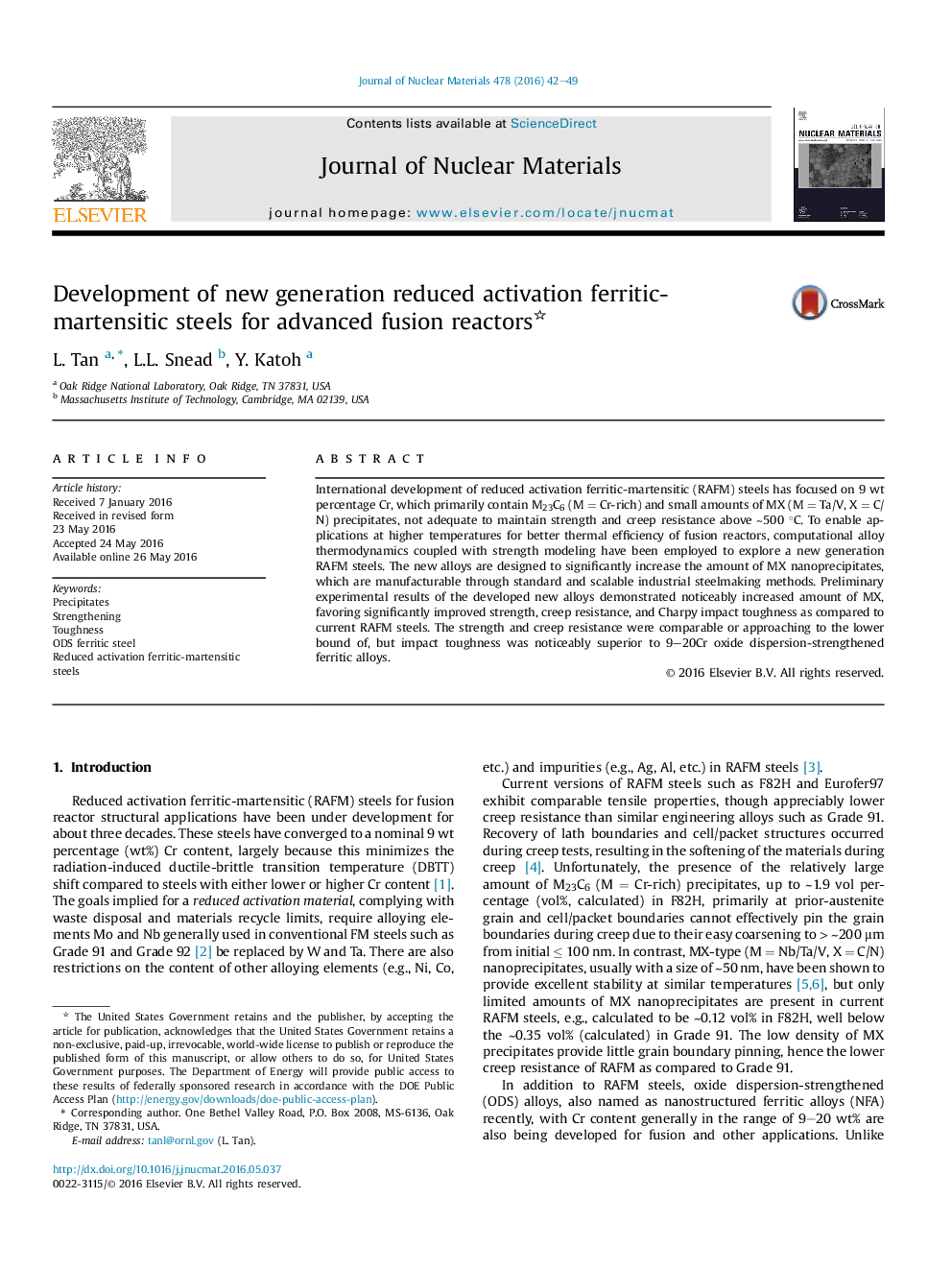| Article ID | Journal | Published Year | Pages | File Type |
|---|---|---|---|---|
| 1564682 | Journal of Nuclear Materials | 2016 | 8 Pages |
International development of reduced activation ferritic-martensitic (RAFM) steels has focused on 9 wt percentage Cr, which primarily contain M23C6 (M = Cr-rich) and small amounts of MX (M = Ta/V, X = C/N) precipitates, not adequate to maintain strength and creep resistance above ∼500 °C. To enable applications at higher temperatures for better thermal efficiency of fusion reactors, computational alloy thermodynamics coupled with strength modeling have been employed to explore a new generation RAFM steels. The new alloys are designed to significantly increase the amount of MX nanoprecipitates, which are manufacturable through standard and scalable industrial steelmaking methods. Preliminary experimental results of the developed new alloys demonstrated noticeably increased amount of MX, favoring significantly improved strength, creep resistance, and Charpy impact toughness as compared to current RAFM steels. The strength and creep resistance were comparable or approaching to the lower bound of, but impact toughness was noticeably superior to 9–20Cr oxide dispersion-strengthened ferritic alloys.
